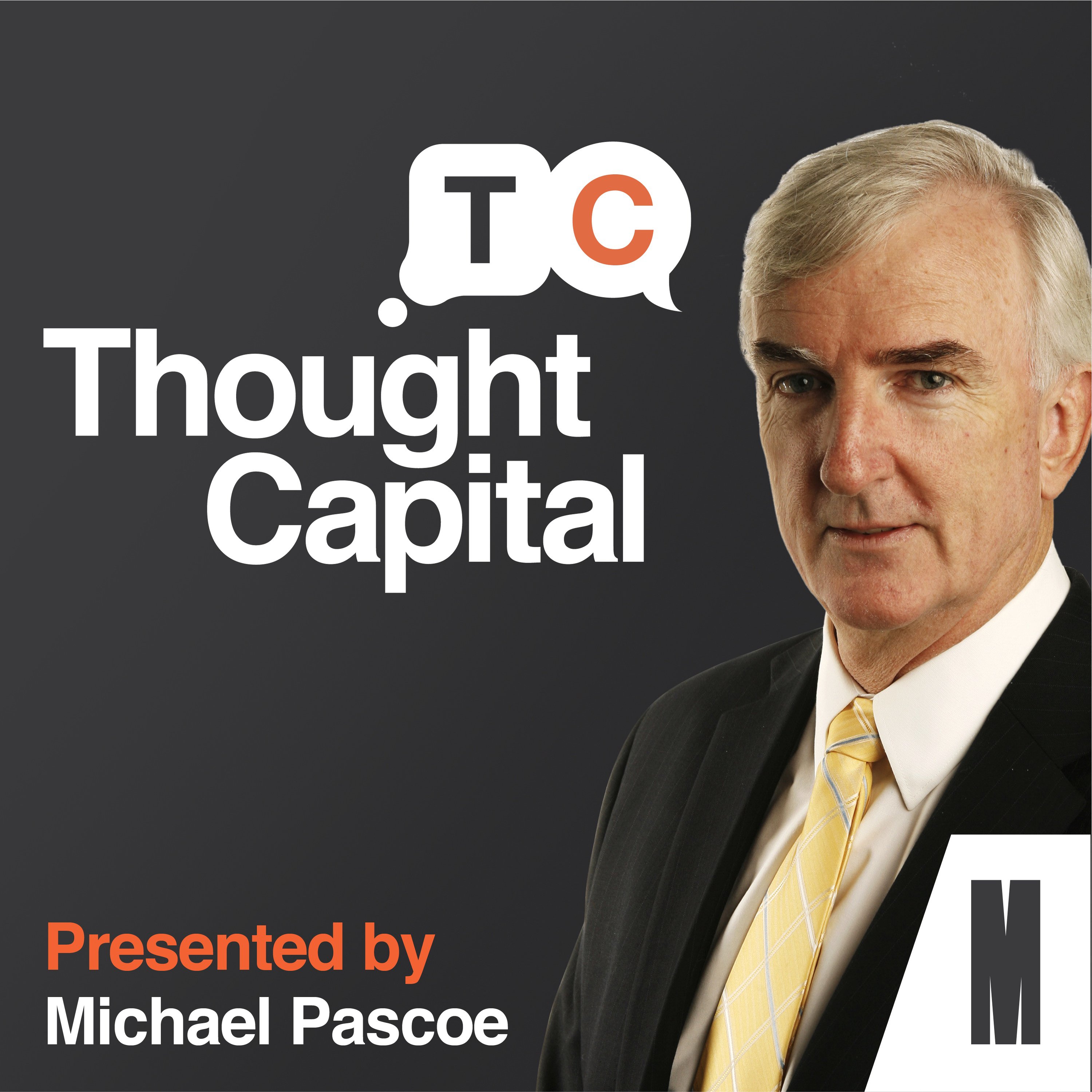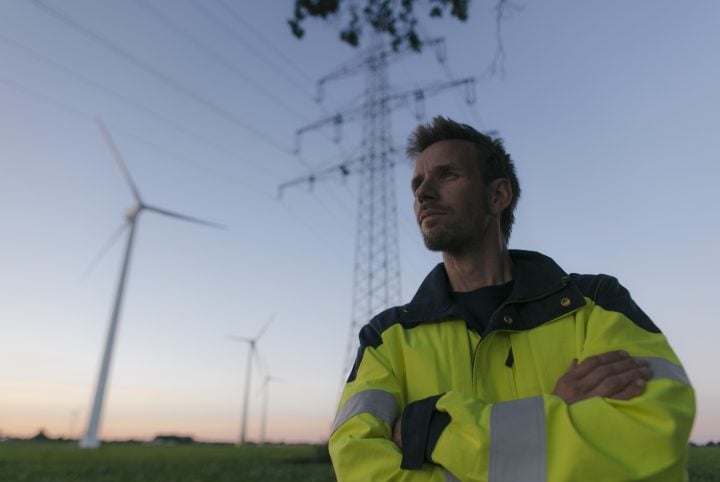Michael Pascoe: Transportation is a very important component in dealing with climate change, especially for a continent as vast as Australia. Transport’s responsible for nearly a fifth of Australia’s total CO2 emissions, and an Australian car, ute, or truck has been demonstrated to be politically sensitive. China and Europe are well ahead of Australia in turning their transportation fleets electric.
Norway has the highest per capita use of electric vehicles in the world, with more than two thirds of their car fleet now plug-in electric, and they’re on track to end the sale of internal combustion engine cars this year. In the world’s biggest car market, China, three million plug-in electric vehicles were sold last year. Including hybrid vehicles, electric sales were 19% of the new car market.
Progress in Australia is much slower. We don’t make it onto any top 20 lists. There is a lack of charging infrastructure, and electric cars are unaffordable for many. So, what does it take to get Australians into electric cars?
With me today over zoom is Dr. Diane Kraal from the Department of Business Law and Taxation at Monash Business School. Diane, we’ve met before on the show to talk about your work in energy justice. Your earlier research helped persuade the federal government to make a major design change to the petroleum resource rent tax, as well as investigating the gas transfer price to get a fairer price for the community. Now you’ve turned your focus to transforming our vehicle fleet. Why?
Diane Kraal: My shift has been driven by my position that Australia does need to decarbonise by 2030. In my view, 2050 is a little bit too late. We’ve got to lower our CO2 emissions, whether it’s from the liquified gas industry, for instance, or from the transport industry. So transport provided by cars, and we’re talking first of all internal combustion engine cars, contributed to 18.3% of Australia’s CO2 emissions in 2020.
That’s high. Another interesting fact is that 40% of light vehicles sold in Australia are purchased by business. And so fleets have been already identified as a possible source of having impact if we can transition out of petrol and diesel and into renewable energy. And so the research that I’ve conducted basically looks at fleet vehicles, and not only fleet vehicles, but also this problem of charging. We don’t have a lot of charging infrastructure. Range anxiety’s a real issue. And so we’re advocating home charging as part of the project.
Michael Pascoe: And is there something about fleet managers that make them easier to reach or easier to deal with, from a carrot and stick point of view?
Diane Kraal: Yes. First of all, we like the idea of fleet vehicles, because of purchasing power, and also fleet managers are more rational. If circumstances are right, they will go out and buy white BEVs. They don’t care about the color, they don’t care about the leather trim. We just felt that questioning consumers en masse would be too complex. So we thought, let’s just focus on fleet managers that are rational in their approach, and it made our questioning more straightforward.
Michael Pascoe: Am I right in suspecting that a good percentage of those fleet vehicles are bought on novated leases, and are therefore getting a tax break already from the government? Is that something that could come into play?
Diane Kraal: Interestingly, we interviewed fleet managers from all over Australia. We had a small sample, what we call a qualitative investigation. We talked to ASX companies, private companies, statutory authorities, as well as local councils. And it was actually split. Some of them had an outright purchasing policy, and others had a leasing policy. But in answer to your question about tax, and we’re talking about say fringe benefits tax, if a vehicle is brought home, they’re potentially liable for fringe benefits tax. And what we’re saying is, if you flip over to a battery electric vehicle and allow your employee to drive that car home and charge it up every night, because there’s a lack of charging infrastructure, it should not be subject to fringe benefits tax. So a little sweetener, not a lot.
Michael Pascoe: Is it worth so subsidising electric vehicles when so often subsidies end up going to people who don’t exactly need the money?
Diane Kraal: Yes, you could say that. But we also drew on overseas experience, and we looked at Norway, we looked at the UK, we looked at Germany, we looked at those countries that have got specific tax policies to drive up the uptake of BEVs and have been successful. And it’s just part of what government has had to do. I mean, tax is a very powerful tool, and the current government’s slogan is “Technology, not taxes,” to get to low carbon emissions, and it’s not working. It’s not working. So we do have to observe what’s working overseas, and we do have to introduce regulations, but we can use the tax system, short term and long term, in the form of fringe benefits tax preferencing battery electric vehicles, income tax preferencing battery electric vehicles, as well as subsidies to employers and rebates to employees of companies that have fleet cars. So we’re talking just a small group, not the wide community at this point.
Michael Pascoe: What else on the income tax side?
Diane Kraal: The other thing that we’re trying to address is this lack of charging infrastructure. So typically the employee drives home and charges up the car, because there’s nowhere to charge it at work, but it’s not as easy as that. They actually have to get a charger installed, and sometimes it’s best if you get a meter as well, something a little bit more sophisticated, so that the car can be charged at a particular time of day, maybe to take advantage of solar or maybe lower electricity rates. But all that costs money. And now, because the person’s taking it home, it’s considered private and not tax deductible. So what we’re saying is, as a fleet employee or as a business owner, if you buy charging infrastructure and also the installation costs, that it should be tax deductible or subject to a rebate.
Michael Pascoe: Is there a danger that we end up subsidizing wealthy people who can afford to spend $120,000 on the top of the line Tesla or whatever, when most of us are having to still drive dirty cars?
Diane Kraal: No, again, we’re addressing business transitions. So it’s pretty equitable in that sense. And again, talking to some of the fleet managers of local city councils Australia-wide, they were very conscious of the fact that it’s not a good look to buy an $80,000 Tesla. They are looking to buy a reasonable priced BEV, and a lot of our councils now have got them charging stations outside libraries and what have you, and some of the councils are using BEVs for their parking officers, because they make little short trips around and round, and they’re easy to charge up. So there is a need for them, and they are working well in some circumstances. But a car used by a parking officer compared to someone that wants a proper trade vehicle, it’s a different kettle of fish. So there’s a problem with fit for purpose BEVs in Australia.
So what’s Australia getting? We’ve got this insatiable demand for cars, and the manufacturers are thinking, “It’s cheaper to build a dirty car and send it to Australia, we’ll still get that high markup, the government’s not saying anything. So why not?” Low emission cars are expensive to construct, but we’re saying, “We’ll have dirty cars and no regulations.”
Michael Pascoe: The total cost of an electric vehicle. Cheaper to run, cheaper to maintain?
Diane Kraal: Yes. Yes. Again, in interviewing a range of fleet managers, they all have this measure called total cost of ownership. So every time they look at a car to add to their fleet, they look at the total cost of ownership, which basically looks at the purchase price and the running costs over the life of the vehicle. They’re all saying, yes, it is cheaper to run and maintain an electric vehicle. They’re all unanimous about that. But it’s just this upfront purchase price, starting at about 60,000, that is just problematic with their budgets. Now, they’re rational people. They just want a white BEV ute that’s not available, or if it were, it’s 60,000. So it’s a real problem. So the fleet managers are worried about total cost of ownership, as well as fit for purpose. That’s the message we got back from the interviews.
Michael Pascoe: Just taking a couple of steps back, while most of our electricity is being generated from coal and gas, does it make sense to put another burden of electric demand on the grid, when you’re not really saving the planet if you’re driving an electric vehicle that is powered by coal?
Diane Kraal: Correct. But we have to start somewhere. That’s why, first of all, we’re advocating a battery electric vehicle as opposed to a hybrid vehicle, because hybrid uses petrol as well as battery. And so just forget the hybrids. We’re just focusing on battery electric vehicles. And yes, I know that a lot of them will continue to be charged directly from the grid using coal fired power, but then there’s a lot of solar panels still out there. Australia’s done virtually nothing, and we’ve got these other European countries ahead of us. We’ve got to close the gap somehow. And just by saying, “The energy’s going to be from coal, therefore forget it,” I don’t think we can take that position.
Michael Pascoe: Diane, if someone drives their car home, plugs it in overnight, aren’t they just adding more pressure for coal fired power over the grid, if that’s the normal time they charge?
Diane Kraal: No, you’re quite correct there. Most people, and research has shown this, drive the car home and they just plug it in. And if you’ve got a low level charging bit of infrastructure, yes, it will put pressure on the grid. It’s a real concern. And one of the ways of getting around that is to use a smart charger as part your infrastructure. You can very easily program that the charging occurs maybe 10:00 at night or 2:00 in the morning. But then on the flip side, a lot of people are now working from home. They’re not commuting as much, but they still need a car, maybe it’s because they live in the outer suburbs. And in those circumstances, you can actually use the car as an energy source for your home. So for instance, an ideal set up is you’ve got solar panels, charges up your car, and then you use the power from the battery of your car that’s recharged your house.
Michael Pascoe: Diane Kraal, thanks for talking to us.
Diane Kraal: Thank you very much, Michael.
Michael Pascoe: If you’ve enjoyed the podcast, don’t forget to give us a five star review, and tell your family and friends about us. Next time, we’ll be talking about supply chains and the circular economy. Join us then. Thought Capital was written and produced by Tina Zenou. Editing by Nadia Hume. Our executive producer is Helen Westerman.




